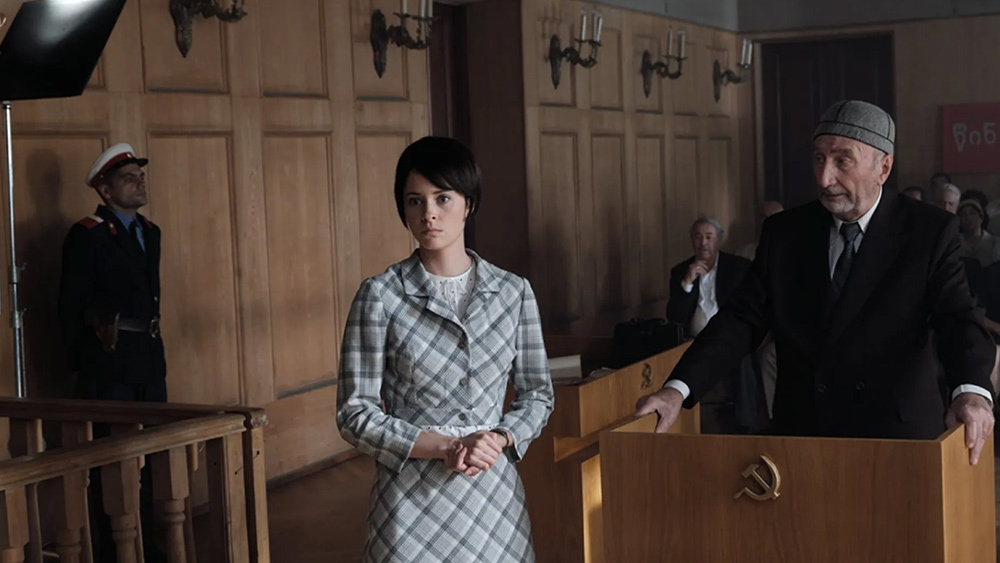From March 23 to 26, the Channel One mini-series will be broadcast about the work of the Soviet justice system in the second half of the 1960s, when Leonid Brezhnev was the General Secretary of the CPSU Central Committee.
The protagonist of the new tape is a novice lawyer Nina Metlitskaya. For two years of practice, she did not often win things, but she was still ready to go all the way for the defendants.
For this, Nina was called an intercessor. An interesting episode: one of her first clients is a teenager from Troitsk near Moscow. The boy is accused of trying to turn in the waste paper the complete works of Lenin.
At some point, the girl becomes disappointed in the judicial system and even thinks of quitting her career. However, under the patronage of her husband, Nina falls into the most prestigious place - in the Branch No. 1 of the Moscow College of Lawyers. Here, as usual, she has a wise mentor Lev Yuryevich Rybak (Alexander Sirin), less talented, but envious colleagues, as well as a competitor for men's attention.
In addition to legal issues, Nina has to solve personal problems: it turns out that the husband - in the past a ladies man - will change his wife rather than his habits.
- Frame from the series "Intercessors"
- © Channel One
A successful cast was selected in the "Intercessors": most of the artists appear on film and television screens, but not so often as to become hostages of certain roles. Their types generally correspond to the images of citizens of the Soviet Union of the 1960s.
By the way, the starring Marie Vorozha previously played Galina Bourdonskaya, the first wife of Vasily Stalin, in the television series "Son of the Father of Peoples." In “Intercessors”, her Nina turned out to be very moving in her belief in goodness, justice and honesty.
With an enviable persistence, the heroine undertakes to correct the imperfection of the world, and she quickly finds helpers: according to the laws of the genre, the cute and naive heroine attracts much more attention from men than the more spectacular ladies from her environment.
Among Nina’s admirers are a rustic taxi driver ready to take her to the ends of the world (or at least the Moscow region), and the president of the tribunal. The latter, as actor Igor Gordin admitted, will become an antagonist: Oleg is a hypocritical careerist who pursues exclusively his own interests.
An equally bright character is a colleague of Nina Brushtein (Yuri Nifontov). This is a lawyer with 25 years of experience who is absolutely indifferent to the fate of his clients: someone’s life cares less for a man than building his own summer house.
It may seem that minor heroes were made so unpleasant on purpose, so that against their background Nina looked like a bright ideal “from the poster”. However, such a division into black and white looks implausible. However, some Soviet cinematographers sinned similarly, so it can be considered that the dramaturgy of "Intercessors" also corresponds to the spirit of the times.
- Frame from the series "Intercessors"
- © Channel One
Filming took place in Moscow, Podolsk, Minsk and Tbilisi. Especially for the film, posters were drawn and colorful cars of that era were selected. In addition, it was possible to recreate several images of celebrities of the 1960s - 1970s. So, the heroine of Ekaterina Volkova was written off from actress Valentina Malyavina, who went to prison on charges of murdering a civil husband.
The series "Intercessors" is based on the book "Notes by a lawyer" by Dina Kaminsky. At one time, the author was a human rights activist, a member of the Moscow Helsinki Group and participated in the most important lawsuits of that era, speaking on the side of many dissidents.
Director Vladimir Kott said that in preparation for the filming, filmmakers used other materials.
“The fact is that in addition to Dina’s book, there are still real criminal cases on which the book was written. And we had the opportunity to read the records of the court hearings in the original. It helped a lot in the details, ”said Cott.
He noted that the circumstances of the cases were conveyed reliably in the picture, and the main work was carried out on dialogues. “This is not the story of Dina Kaminsky, this is the story of a system that breaks a person, but cannot break,” the director explained.

